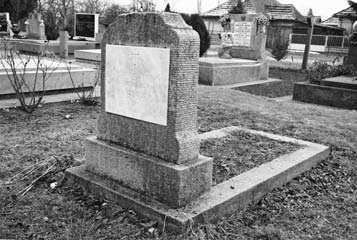Bela Farkas, the son of the clarinetist Akasha Bućkai and the young singer Neli Gaboš, was born on February 24, 1894 in Rijeka. Farcash’s surname was given to his mother’s mother in the name of Subotic engineer Jozef Farkaš. He never met his father even though he really wanted it. He spent his childhood and youthful days in Subotica and Palic. He attended high school in Budapest, and he graduated in Subotica in 1911. He enrolled in the School of Applied Arts in Pest. For the first time he exhibited his pastel in Subotica at the exhibition of the Pest Salon on May 5, 1912, as a graduate, self-taught painter.
According to his own statement from 1924, he was educated in Nađbanj, then in Pest, Vienna and Berlin, and then from the summer or autumn of 1913 to mid January of 1915, in the art colony in Kecskemét. The mentor was his famous painter Bela Ivanji Grinvald. In Vienna and Berlin, he dealt with theater scenery, and in Kecskemet he bowed to “late Art Nouveau stylization.”
During World War I he was a soldier of the Austro-Hungarian Empire. He fought in the Russian and Italian battlefields. He survived all the horrors of war. He returned from the battlefield in 1918 to Subotica with deep psychological trauma.
After the war, he was spiritually fragile failed to solve his existential problems. In such a state of continued study he could not even think about it. The city had no understanding of his art. Unwittingly without any help from the side, he resorted to narcotics and drinks. Although he lived extremely scarce, he was not a misanthropist. He had friends, went to various societies and was a regular guest in the editorial offices of the Subotica and Novi Sad newspapers. After the war, its recognition of pastel dreams, theater scenes and strong contours will gradually become more and more established. He also worked on poetry, wrote novels and articles for local newspapers. Painting associates him with “flower children” of a later period, but equally resigning and anti-mood. During the intermittent period, he had a joint exhibition with the Baranja couple.He exhibited his eight paintings at the exhibition of painters from Bacau in Subotica in 1932.
When the next war “found” on Palic, on October 13, 1941, at the anniversary of his mother’s death, he threw himself under the tram in a candle in his hand. He is buried at the cemetery.
His art is full of endless sorrows by the war of an impassioned intellectual. His paintings are in private collections and in the local gallery of the City Museum in Subotica.
After World War II it was rediscovered. The images that were once sold for desolation are today welcome in every gallery. During his lifetime he did not have any solo exhibition. The first retrospective exhibition was organized in 1961 at the 20th anniversary of his death.
The tombstone of Bela Farkaš at the cemetery of the palm was made in artificial stone with a worm (200 x 100 cm).
The vertical panel (122 cm high) is placed on a rectangular bed with a built-in white marble slab (52 x 40 cm) with text.
TOMB OF BELA FARKAS


0 comments on “TOMB OF BELA FARKAS”